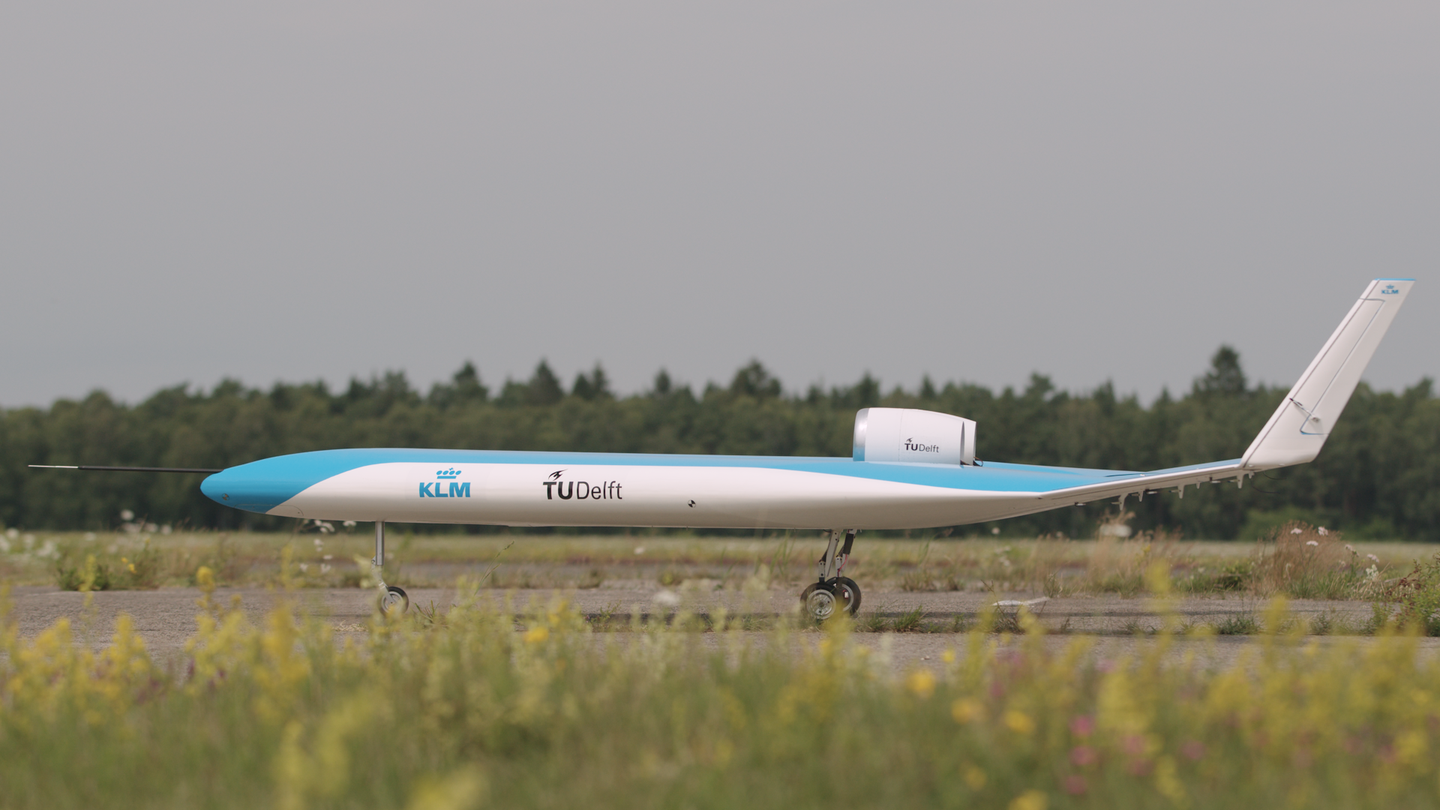Flying-V Model Completes First Flight
In partnership with Dutch airline KLM, Delft University of Technology (TU Delft) has successfully flown a scale model of its Flying-V airliner concept for the first time. The remotely controlled…

Image: KLM
In partnership with Dutch airline KLM, Delft University of Technology (TU Delft) has successfully flown a scale model of its Flying-V airliner concept for the first time. The remotely controlled model weighs in at 22.5 kg (49.6 lbs.) with a 3.06-meter (10.04-foot) wingspan. The Flying-V, which “integrates the passenger cabin, cargo hold and fuel tanks in the wings,” is designed to be an energy-efficient long-haul aircraft.
“One of our worries was that the aircraft might have some difficulty lifting-off, since previous calculations had shown that ‘rotation’ could be an issue,” said project leader Roelof Vos. “The team optimized the scaled flight model to prevent the issue but the proof of the pudding is in the eating. You need to fly to know for sure.”
According to TU Delft, the Flying-V will offer a 20 percent reduction in fuel consumption over the Airbus A350 while carrying a comparable number of passengers. As previously reported by AVweb, KLM announced last year that it would be funding the development of the Flying-V. Along with KLM and TU Delft, Airbus is also involved with the project.
Video: KLM Royal Dutch Airlines






